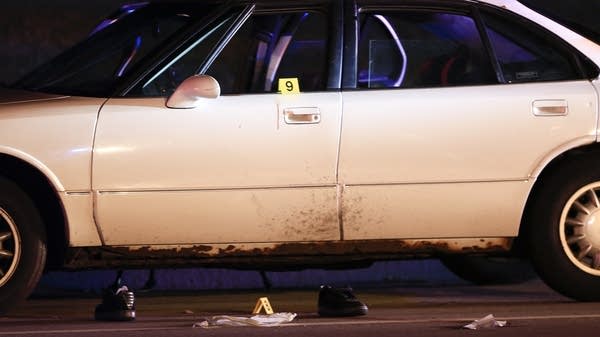At Castile stop, uneasy questions of race and police training

Investigators mark the vehicle that Philando Castile was driving when he was shot and killed by a St. Anthony police officer in Falcon Heights on July 6.
Christopher Juhn for MPR News
Go Deeper.
Create an account or log in to save stories.
Like this?
Thanks for liking this story! We have added it to a list of your favorite stories.


